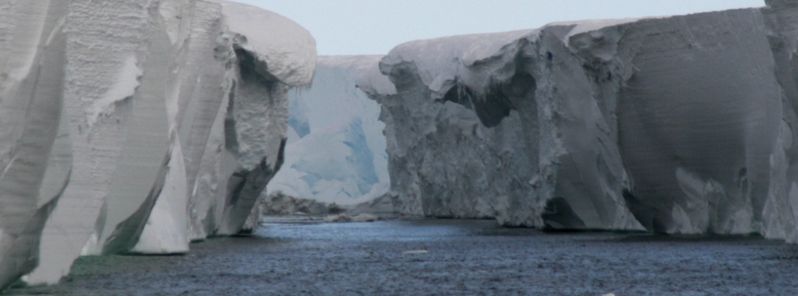Mysterious waves in the Antarctic atmosphere triggered by ice shelf vibrations

According to the new research, the ripples and undulations in the atmosphere above Antarctica are most likely induced by the low-frequency vibrations of the Ross Ice Shelf, the largest ice shelf in the world, extending over half a million square kilometers (188 000 miles). Mathematical models showed the vibrations in ice match those in the atmosphere,and further study is expected to significantly contribute to understanding the status and stability of ice shelves,
The unusual atmospheric waves have been observed in 2011, at McMurdo Station in Antarctica, at an altitude from 30 to 115 km (20 and 70 miles). The waves have a period of a few hours and have been monitored for a few years. The atmospheric waves are not an unusual occurrence, per se, and are regularly observed across the globe, but these particular waves are persistent and the scientists were unable to figure out what was driving them.
The new research suggests, the atmospheric waves are connected to the vibrations of the Ross Ice Shelf, a huge ice shelf of an area the size of France. The imperceptible vibrations of the shelf are caused by the ocean waves and other forces, and it appears they get transferred and amplified in the atmosphere.
If the study proves to be correct, the atmospheric waves may be used to measure properties of the ice shelf, which are usually quite hard to identify, such as the amount of stress the shelf experiences from ocean waves.
“If atmospheric waves are generated by ice vibrations, by rhythmic vibrations of ice—then that carries a lot of information of the ice shelf itself,” said Oleg Godin, a professor at the Naval Postgraduate School in Monterey, California, and lead author of the new study.
The results from this study could significantly contribute to understanding the status and stability of ice shelves. The understanding of such shelves is important, and their size and movement is constantly monitored, as their breakup indirectly adds to the seal level rise through its impact on the land ice.
“Ice shelves buffer or restrain land ice from reaching the ocean. The long-term evolution of an ice shelf—whether or not it breaks up and disintegrates—is an important factor in how fast sea level will rise," said Peter Bromirski, a research oceanographer at Scripps Institution of Oceanography at UC San Diego in La Jolla, California, who was not involved in the study.
Two theoretical models have been used in the research. One of them approximates the ice shelf as a smooth rectangular slab of ice while the other observed the ice as a layered fluid. Know ice properties, such as elasticity, density, and thickness have been used to calculate the time the vibrations in ice would take to complete one cycle.
According to the results, the ice shelf vibrates within a 3- to 10-hour period, which matches the vibrations observed in the atmosphere. Such ice vibrations would be capable of generating atmospheric waves of a vertical wavelength extending from 20 to 30 km (12 to 18 miles).
“Even in this simplified description [of the ice], it readily explains the most prominent features of the observations. That’s why it goes beyond hypothesis. I would say it’s now a theory,” said Godin.
The vibrations are likely transported to the atmosphere by a direct contact with the air above the shelf. The ice sheet vibrations are small, but they can create large atmospheric disturbances because of a reduced air pressure in the high atmosphere layers. A shelf vibration of a one-centimeter amplitude can move air hundreds of meters up and down when the wave reaches the air of lower density in the high atmosphere.
Because of their size, the waves can easily be observed using radar and Lidar, and the scientists plan to use an advanced research radar to study the phenomenon in further detail.
“There are suggestions in the literature that accelerated breakup of ice shelves will lead to rise of sea level by several meters by the end of the century. Anything we can do to quantify what is going on with these large ice shelves is of huge importance," Godin said.
Reference:
- "Resonance vibrations of the Ross Ice Shelf and observations of persistent atmospheric waves" – Oleg A. Godin, Nikolay A. Zabotin – Journal of Geophysical Research (2016) – DOI: 10.1002/2016JA023226
Featured image: Ross Ice Shelf, January 28, 2007. Image credit: Lin Padgham (Flickr-CC)

Commenting rules and guidelines
We value the thoughts and opinions of our readers and welcome healthy discussions on our website. In order to maintain a respectful and positive community, we ask that all commenters follow these rules.